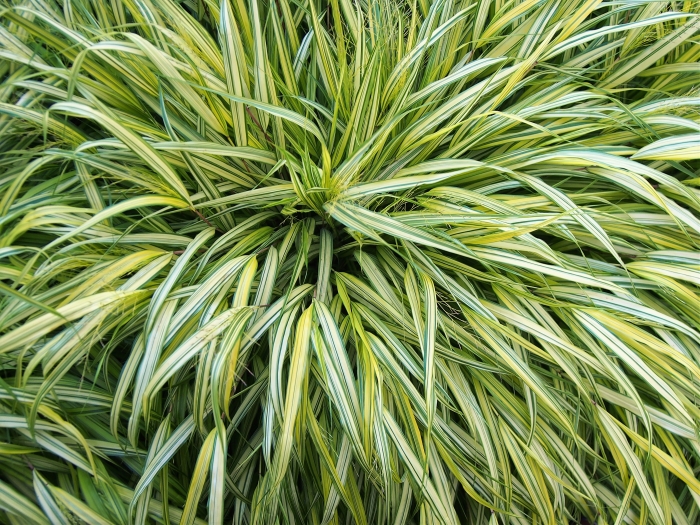Hakone Grass
(Hakonechloa macra)
Hakone Grass (Hakonechloa macra)
/
/

Agnieszka Kwiecień, Nova
CC BY-SA 4.0
Image By:
Agnieszka Kwiecień, Nova
Recorded By:
Copyright:
CC BY-SA 4.0
Copyright Notice:
Photo by: Agnieszka Kwiecień, Nova | License Type: CC BY-SA 4.0 | License URL: https://creativecommons.org/licenses/by-sa/4.0 | Uploader: Nova | Publisher: Wikimedia Commons | Title: Hakonechloa_macra_'Aureola'_2020-07-31_02.jpg | Notes: {{Information |Description ={{en|1=Location taken: Merrifield Garden Center, Fairfax VA USA. Names: Hakonechloa macra 'All Gold' , All Gold Japanese Forest Grass, Gold Hakone Grass, Japanese Forest Gras Classification: Plantae > Ang





























Estimated Native Range
Summary
Hakonechloa macra, commonly known as Hakone Grass, is a deciduous perennial grass native to moist, shaded areas of the mountainous regions of Honshu, Japan. It typically grows to a height of 45-60 cm (18-24 inches) and forms a graceful, rounded, fountain-like clump that slowly spreads in circumference. The slender, arching stalks and bright green leaves create a soft, flowing texture in the garden, with a resemblance to Pennisetum (fountain grass) in form but with leaves similar to those of Chasmanthium. Hakone Grass is particularly noted for its vibrant green foliage that turns attractive shades of gold, orange, or red in the fall, adding seasonal interest to the landscape.
Hakone Grass is valued for its ability to thrive in part shade and its use as a ground cover or accent plant in woodland gardens, shaded borders, and containers. It prefers consistently moist soils with good drainage and can tolerate more sun in cooler climates if kept adequately watered. This grass is relatively low-maintenance, but it benefits from being divided every few years to maintain its vigor. It is not known for any significant disease or pest issues, making it a reliable choice for gardeners. While it is non-invasive, gardeners should be aware that it may take time to establish and fill in an area due to its slow-spreading habit.CC BY-SA 4.0
Hakone Grass is valued for its ability to thrive in part shade and its use as a ground cover or accent plant in woodland gardens, shaded borders, and containers. It prefers consistently moist soils with good drainage and can tolerate more sun in cooler climates if kept adequately watered. This grass is relatively low-maintenance, but it benefits from being divided every few years to maintain its vigor. It is not known for any significant disease or pest issues, making it a reliable choice for gardeners. While it is non-invasive, gardeners should be aware that it may take time to establish and fill in an area due to its slow-spreading habit.CC BY-SA 4.0
Plant Description
- Plant Type: Grass
- Height: 1-1.5 feet
- Width: 1-2 feet
- Growth Rate: Slow
- Flower Color: N/A
- Flowering Season: Summer, Fall
- Leaf Retention: Deciduous
Growth Requirements
- Sun: Part Shade
- Water: Medium
- Drainage: Medium
Common Uses
Bank Stabilization, Border Plant, Deer Resistant, Groundcover, Low Maintenance, Potted Plant, Rock Garden, Street Planting
Natural Habitat
Moist, shaded areas of the mountainous regions of Honshu, Japan
Other Names
Common Names: Japanese Forest Grass
Scientific Names: , Hakonechloa macra, Hakonechloa macra var. aureola, Phragmites macer, Hakonechloa macra f. albovariegata, Hakonechloa macra f. aureola, Hakonechloa macra var. alboaurea, Hakonechloa macra var. albomarginata, Hakonechloa macra var. albovariegata, Phragmites macrus
GBIF Accepted Name: Hakonechloa macra (Munro) Honda